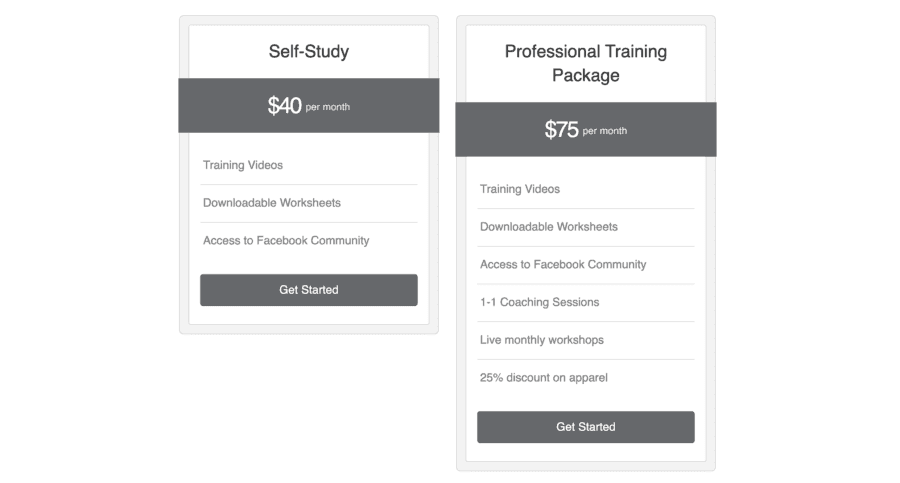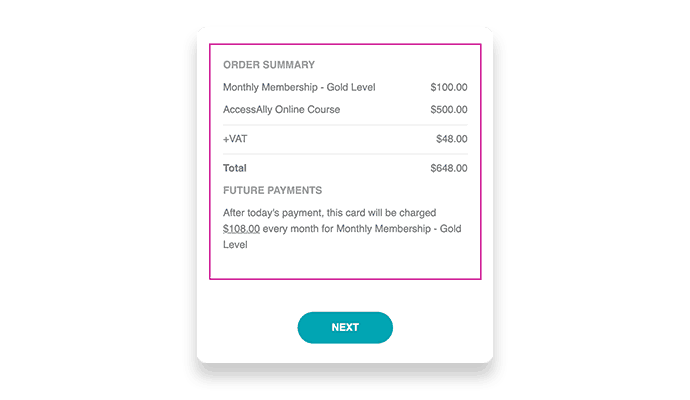Selling subscription products is a key way to build up an arsenal of recurring revenue for your business. This revenue can improve the stability of your income and provide a solid customer base.
When you are ready to sell a membership subscription, every part of your sales and customer retention funnel becomes all-important. Think of it like an ecosystem: with a subscription product, you not only need to make the first sale, but you have to create an environment where each client can survive and thrive.
So before we get into how to create an order form on WordPress for your recurring subscription products, let’s take a look at some of the other pieces that will contribute to the success (or failure) of your membership subscriptions.
ARTICLE CONTENT:
5 Strategic Considerations to Help You Sell a Membership Subscription
1. Create a Comprehensive Path for Optimal Sales
We already mentioned the importance of viewing the customer journey as an ecosystem when working with recurring subscription products.
If it’s helpful, create a map for yourself of each point of contact that contributes to the initial sale and subscriber retention.
2. Improve The Customer Lifetime Value

When you shift into selling recurring membership subscription products, the “Customer Lifetime Value” metric can make or break the entire venture.
Customer Lifetime Value (or “CLV”) gives you a solid estimate of how much you can reasonably expect to “earn” from each customer.
When you’re just starting out, this number will be extremely small, since membership subscriptions are typically much lower than one-time payments. (It might take months before you start seeing the same CLV with a membership program as you would with a single high-ticket program, for example).
The good news? The more you improve your subscription product and retention rates, the higher your CLV will grow.
3. Address Common Issues With Recurring Subscriptions
Credit cards do not have eternal validity … and any number of issues can contribute to a failed membership charge:
- The card’s expiration date is passed
- A stolen/lost card (or other serious security issue) resulted in the card being “frozen” or replaced
- The user canceled their credit card
Granted, card-specific issues aren’t the only cause of failed monthly subscription payments.
Since all transactions are run through a series of payment processing systems, it’s possible that the technology simply doesn’t succeed in charging the payment.
This could be attributed to a hosting issue causing conflicts on your site (the reason we only recommend using certain LMS hosting providers) or an API misfire.
When you experience this for yourself, (and it’s almost inevitable, no matter which system you’re using), make sure you have a process and the necessary tech tools in place to resolve the issues:
- Re-run the failed charge, in case the error resulted from a tech glitch
- Give your members an easy way to update their credit info, in case they have a new, or alternate card they wish to use
- Automate a notification sequence so that the member is always notified when their payment cannot be run successfully so they can take the necessary actions to resolve the delinquency.
4. Keep Your Clients’ Information Secure
If you’re accepting clients’ payment information, you are responsible for keeping that information confidential and safe from prying eyes. At the very basic level, you need an SSL certificate on your site to secure credit card information for recurring payments.
It also means staying up-to-date on the latest security measures (like the recent PSD2 and SCA compliance requirements).

Once you are confident in the technical side of security, it’s a good idea to help your clients feel safe as well by displaying visual elements (like credit card logos and security seals) on your order forms.
5. Stay Compliant with Location-Based Taxes and Fees
Accepting payments via membership plugin means that you are responsible for choosing the payment processing tools that are compliant with tax requirements (from local state sales taxes to VAT).
To ensure you’re remaining compliant in these areas consult your accountant and legal counsel.
Although this may seem like a daunting task, it’s time well spent.
If your customers trust you enough to sign up for your product or services, you want to make sure you’re doing everything you can to earn that trust.
Compliance & Convenience: The #1 Reason People Use Third-Party Hosted Tools
Many online business owners selling recurring subscription products are simply overwhelmed by all the “things to think about”, and prefer to choose third-party hosted solutions (like Shopify, for example) in an attempt to reduce some of the setup maintenance concerns.
Many successful businesses sell their products this way … and learn (sometimes the hard way) that they’re still responsible for knowing legal and tax requirements, security info, etc.
In short: a hosted solution is convenient.
But if you’re looking for a way to bring that high-end shopping experience of a hosted platform to your WordPress website, read on …
How to Create An Order Form on WordPress for Subscription Products
Step 1: Choose Your WordPress Subscription Plugin
To create and sell recurring payment products on WordPress, you’ll need a WordPress plugin with this functionality. The AccessAlly plugin allows you to:
- Design your own products (with extremely flexible settings for length of subscription, prices, discounts, etc.)
- Create secure, password-protected membership areas for each person who subscribes
- Track important metrics on a reporting dashboard (like the Customer Lifetime Value we mentioned earlier)
Because of this all-in-one functionality, we’ll use AccessAlly as the example in this setup tutorial.
Step 2: Create Your Subscription Product
Now, it’s time to create the subscription product itself … and this is where you can really get imaginative.
If you’re running a membership program for Agility Dog Training, for example, you could do a single membership subscription of $60/month that gives access to all your materials.
… or, you could separate it out into different tiers that might appeal to a wider variety of clients. The first might be set at $40/month for access to training videos, worksheets, and the Facebook group community. The second might be $75/month and include everything from tier 1 plus live workshops, 1-1 feedback from a professional trainer, and a discount for your apparel store.

From a setup perspective, you would create two different products entirely: your software reads it as two separate subscription products.
But on the front end, the client only sees the price (and content) difference.
Step 3: Create Your Order Form
Use the AccessAlly drag-and-drop order form builder to design the layout and content of your order form. While there are some design best-practices that will improve your subscription order form (and sales page) conversions, the most important thing to remember is that your wording needs to be clear and concise, so the buyer is acutely aware that there will be recurring charges.
This might seem obvious, but we’ve seen it all, and not all order forms are created equal.For example, you might be selling a one-time product and a membership subscription on the same order form, so the first payment will be $648, but all recurring payments are only $100 (+ tax).

If you are selling multiple tiers for your membership, it’s important to reduce overwhelm by simplifying the layout.
A toggle, for example, lets users to change their tier choice at the last minute (without forcing them to start the checkout process over completely, which could result in a high percentage of lost sales).

Step 4: Monitor Results
Nothing is ever “set-it-and-forget-it” in the business world. To maximize success, you need to monitor the workflow closely and look for ways to tweak and improve it along the way.
Once your subscription order form is live on your WordPress site, monitor stats for abandoned carts, successful sales, and, of course, your customer churn rate.
Sell Membership Subscriptions on WordPress with Flexible, Custom Order Forms
Naturally, there are dozens (or hundreds) of WordPress plugins that allow you to take customer payments on your site.
We chose AccessAlly in this example since it’s actively developed and is a more comprehensive, all-in-one solution that also gives you the ability to create a fully-automated membership site or online course area.

